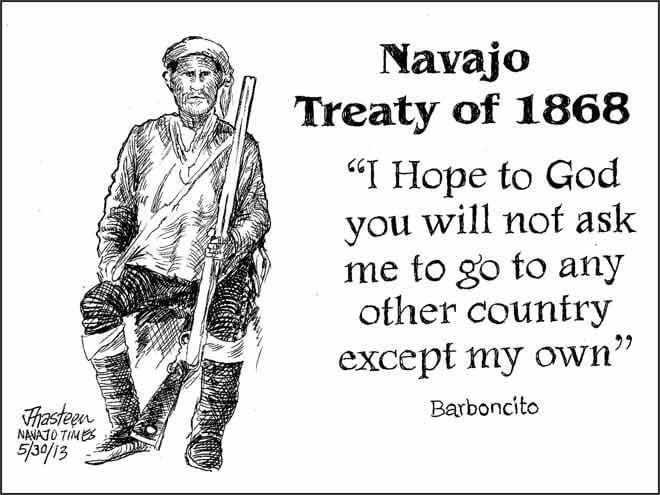
This is Vida Khow, President of Native American Healthcare Solutions, welcoming you to my new blogs. I will be posting a new blog the first day of each month on my favorite subjects on self-care and wellness, women & leadership, and trauma informed care.
My first blog is on the Treaty of 1868 and the resilience of the Navajo people, The Dine’.
154 years ago, today on June 1, 1868, the Dine’, the Navajo people, signed a treaty with the United States government so they could return home, the land in between the 4 sacred mountains. In the treaty, the Dine’ accepted 3.4 million acres of land, only a quarter of their traditional territories.
In 1864, the Dine’ were rounded up by the US Army at gunpoint and marched approximately 450 miles from their homeland to a barren camp in Southwestern New Mexico and imprisoned in a concentration camp. It is estimated that over 4000 Dine died between these years. They suffered malnutrition, starvation, disease, and death. Today, it is known as the Long Walk.
When I was a young girl my great-great grandmother would tell us stories of the Long Walk, the suffering, the starvation, and loneliness for the motherland. It was through their sacred language, traditions, and songs, they overcame the challenges and persevered. When the treaty was signed, and they were allowed to return home, grandmother said that when they came upon their land they were overcome with happiness when they first saw the first of the four sacred mountains. With tears in her eyes, she described how they knelt, sang, prayed, kissed, and ate the precious dirt of Mother Earth when they re-entered the land between the four sacred mountains. It was in harmony with the world. It was beautiful once again.
The Long Walk is just one story of many historical events of the oppression and cultural genocide of the American Indian. People who have experienced oppression, ethnic cleansing and cultural genocide are going to experience effects of trauma that go far beyond psychological and physical effects – it alters individual biology and behavior over one’s life course. Our people are still suffering shame, loss of hope, anger, depression, and these physical effects generation to generation at a cellular level.
Trauma is a major concern from a public health perspective because we know it has a direct correlation to chronic health problems. You can learn more about this by viewing the video that Virginia Watahomigie and I prepared. Virginia has nearly two decades of experience working in the trauma response and prevention field, providing this type of material for school districts, agencies, and the wider community.
This training video was recorded for Arc Health, PBC, a staffing agency and is meant to educate medical providers on how to best approach care delivery for American Indian and Alaskan Native (AI/AN) patients as a historically underserved and mistreated population.
I hope you will have a better understanding after listening to our recording of what has led us to where we are today. We will leave you with resources about ACE (adverse childhood Experience), intergenerational trauma, a historical timeline of cultural genocide of Native Americans, and an overview of the Indian health system and trauma informed care. The video can be viewed on Youtube.com. Search for “Trauma Informed Care presentation” Arc Health PBC. We are also available to present it for your special event.

